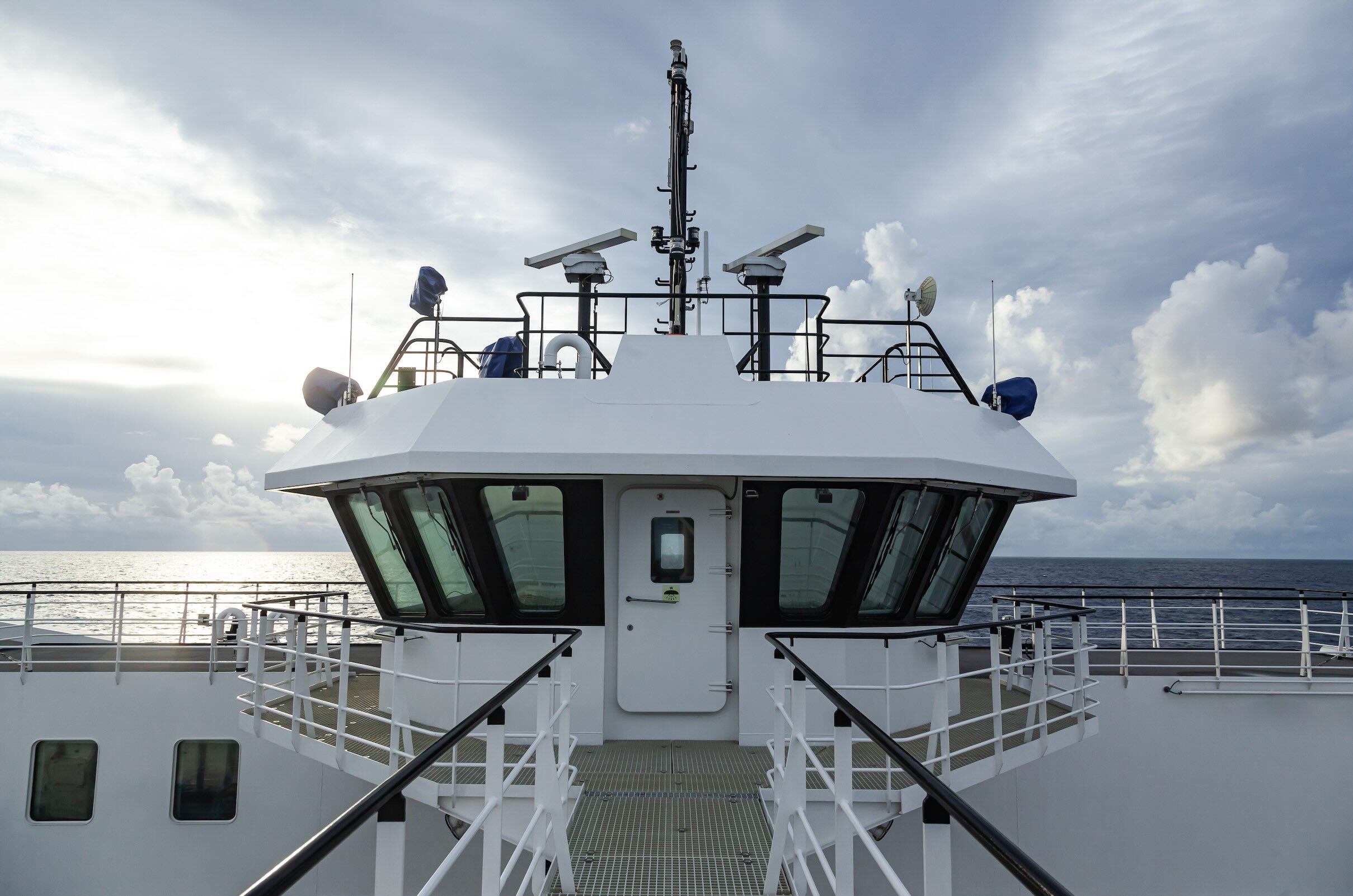Navigating the challenges of U.S. port security
The security of U.S. ports is a critical concern due to their central role in international trade and national defense. These gateways for goods entering and leaving the country are prime targets for threats like terrorism, smuggling, and cyber-attacks, necessitating advanced technology, stringent regulations, and coordinated efforts among government and private entities to ensure their protection as global trade evolves.
The security of U.S. ports is a critical concern, given their pivotal role in maritime security, international trade, and national defense. These ports are gateways for the vast majority of goods entering and leaving the country, making them prime targets for various threats, including terrorist attacks, smuggling, and cyber-attacks. Ensuring the safety and security of these ports involves a complex interplay of advanced technology, rigorous regulatory frameworks, and coordinated efforts among various governmental and private entities. As global trade continues to expand and evolve, so too must the strategies and tactics used to protect these vital entry points from ever-shifting threats.
Evolving Threat Landscape
The nature of security threats to U.S. ports has drastically transformed over the years, demanding continuous evolution in protective measures. Initially, America’s port security efforts were predominantly focused on physical threats such as unauthorized access and theft. However, the contemporary landscape now includes sophisticated cyber-attacks targeting critical infrastructure and data systems. The rise in global terrorism post-9/11 introduced a heightened awareness of the potential use of seaports for smuggling weapons and other contraband. Consequently, ports are not only defending against physical breaches but also insulating their network preparedness against digital intrusions. Additionally, increasing environmental and geopolitical instability contributes to a more unpredictable threat environment. This necessitates the adoption of adaptive security protocols that incorporate real-time intelligence sharing, advanced surveillance technologies, and robust inter-agency collaboration to effectively mitigate and respond to these multifaceted threats. Technological Advancements
Port security measures in the U.S. have seen significant evolution over the years, in response to both emerging threats and advancements in technology. In the early 2000s, the events of September 11 altered the landscape of national security, prompting the implementation of the Maritime Transportation Security Act (MTSA) of 2002. This act sought to address vulnerabilities in the nation’s maritime commerce and established the Transportation Worker Identification Credential (TWIC) program to ensure that individuals with access to secure areas of ports are vetted appropriately. Recently, in February 2024, the U.S. Coast Guard pushed to Congress a proposal to address future cyber-related threats. The outcome of this congressional cybersecurity proposal will be forthcoming. Economic Impact
The economic impact of port security on the United States cannot be overstated. US ports are linchpins in the global supply chain, handling millions of tons of goods annually, from raw materials to finished products. Effective port security ensures smooth and efficient operations, which are crucial for maintaining the flow of international trade and supporting countless jobs within and beyond the maritime sector. On the other hand, security breaches can cause significant disruptions, leading to delays, increased shipping costs, and a loss of consumer and business confidence. Furthermore, stringent security measures, while vital, can also introduce additional costs and operational complexities for businesses, potentially affecting their international competitiveness. Balancing the need for robust security with the imperative to sustain economic vitality remains a critical challenge for policymakers and industry stakeholders alike.

The United States, with its vast coastline and extensive river networks, boasts some of the busiest and most vital water ports in the world. These ports are crucial hubs of international trade, handling millions of tons of cargo annually and serving as essential links in the global supply chain. Here, we explore the busiest water ports in the U.S., highlighting their significance, operations, and the challenges they face in maintaining their status as pivotal points of commerce.
The Port of Long Beach
The Port of Long Beach is a powerhouse of U.S. maritime commerce. Together, these two ports form the San Pedro Bay Port Complex, the largest port complex in the Western Hemisphere. The Port of Long Beach handles around 8 million TEUs of cargo annually, making it a crucial hub for international trade. Sustainability is a key focus for the Port of Long Beach. It has implemented numerous green initiatives, including the use of electric and hybrid cargo-handling equipment, shore power for ships, and extensive recycling programs. These efforts are aimed at reducing the environmental impact of port operations while maintaining high levels of efficiency and productivity.

Port of New York/New Jersey
The Port of New York and New Jersey is the busiest port on the East Coast, serving as a major gateway for goods entering and leaving the United States. This port handles over 7 million TEUs of cargo annually, with a diverse range of imports and exports, including textiles, machinery, and petroleum products.
The port's strategic location near major population centers and its extensive network of rail and road connections make it a vital node in the U.S. supply chain. However, the port also faces challenges such as aging infrastructure, the need for deepening channels to accommodate larger vessels, and the ongoing demands of maintaining security and efficiency in a high-traffic environment.

Port of Houston
The Port of Houston is the busiest port in the United States by total tonnage, handling more than 200 million tons of cargo annually. It is a key hub for the energy industry, with extensive facilities for handling crude oil, petroleum products, and liquefied natural gas. The port's strategic location on the Gulf Coast also makes it a crucial gateway for trade with Latin America and other international markets. The Port of Houston's operations are supported by a vast network of terminals, rail connections, and industrial facilities. However, the port faces challenges such as the need for ongoing infrastructure improvements, environmental concerns, and the impact of severe weather events, including hurricanes and flooding.

Sanctions and Compliance
The Office of Foreign Assets Control (OFAC) plays a critical role in U.S. port security by enforcing economic and trade sanctions against targeted foreign countries and regimes, terrorists, international narcotics traffickers, those engaged in activities related to the proliferation of weapons of mass destruction, and other threats to the national security, foreign policy, or economy of the United States. Compliance with OFAC regulations is mandatory for all entities operating within U.S. ports of entry, and failure to adhere can result in severe penalties. Understanding and navigating these regulations requires specialized knowledge and constant vigilance, as the list of sanctioned entities and restrictions can change rapidly based on the geopolitical landscape.
Sanctioned vessels present a significant challenge for U.S. port security. These vessels are often tied to entities or nations subject to international sanctions, making their presence in US waters a national security concern. In 2019, the U.S. Coast Guard (USCG) intercepted a vessel suspected of violating sanctions imposed on North Korea. The vessel, flagged under a third-party country, was found to be transporting coal in direct contravention of international sanctions. On May 9, 2019, the United States seized the North Korean vessel, the Wise Honest, marking a significant enforcement action against Pyongyang's violation of international sanctions. The Wise Honest, one of North Korea's largest bulk carriers, was reportedly engaged in the illicit shipping of coal from North Korea and the delivery of heavy machinery back to the DPRK. This operation contravenes both longstanding U.S. laws and United Nations Security Council resolutions, which prohibit such activities.
Investigations revealed that payments for the maintenance, equipment, and improvements of the Wise Honest were made in U.S. dollars, routed through unwitting U.S. banks. This not only highlights the deceptive practices North Korea employs to circumvent sanctions but also poses significant compliance risks to the international banking system, which is often manipulated by Pyongyang to fund its sanctioned programs.

Focus on Cuban-Sanctioned Vessels
The relationship between the United States and Cuba has been fraught with tension for decades. Since the Cuban Revolution in 1959, the U.S. has imposed various sanctions on the island nation. These measures were intended to isolate the Cuban government economically and politically. Over the years, these sanctions have evolved, but the core objective remains the same: to press for democratic reforms and respect for human rights in Cuba.
Under current U.S. law, vessels that have engaged in trade with Cuba are subject to restrictions when entering U.S. ports. This policy is part of a broader strategy to maintain economic pressure on the Cuban government. The Department of Treasury’s Office of Foreign Assets Control (OFAC) enforces these sanctions, ensuring that any vessel with a history of docking in Cuban ports faces stringent scrutiny. To mitigate potential risks, U.S. port authorities have ramped up security measures. This includes advanced screening and monitoring systems to track the movements of vessels with Cuban ties. Technology plays a pivotal role, with state-of-the-art tracking and surveillance systems ensuring that no vessel goes unchecked.
In a world where national security remains a paramount concern, the United States continues to bolster its defenses, particularly at its bustling ports. Recent attention has turned towards Cuban-sanctioned vessels, a matter of significant importance given the complex geopolitical landscape, ongoing sanctions, and the close proximity of Cuba to the U.S. The tightening of port security to guard against these vessels is a crucial step in safeguarding American interests. As of July 2024, Russian warships have conducted training in waters south of the United States off the coasts of Cuba.


Inter-Agency Collaboration and Transparency
The U.S. Department of Homeland Security (DHS), U.S. Customs and Border Protection (CBP) officers are at the frontline of border security, conducting rigorous inspections and verifying documentation. They work in conjunction with interagency partners, and other federal agencies, including the U.S. Coast Guard and OFAC, to ensure a seamless and comprehensive security protocol in regards to the U.S. maritime domain. These efforts are supported by intelligence-sharing initiatives with international partners, enhancing the capability to identify and intercept suspect vessels before they reach U.S. waters.
Transparent ownership structures are essential for the effective enforcement of maritime laws and regulations. Vessels often sail under flags of convenience, registered in countries with lax enforcement of maritime regulations, making it challenging for authorities to ascertain the true ownership and control of a vessel. This opacity can facilitate illicit activities such as smuggling, human trafficking, and evasion of sanctions. To counter these risks, U.S. port authorities employ various strategies and technologies to track and verify vessel ownership. Digital tools and international cooperation play crucial roles in this endeavor, enhancing the ability of the authorities to detect and address any suspicious or unlawful activities efficiently.
Securing the United States' bustling ports requires a comprehensive approach that tackles a myriad of issues, including sanctioned vessels, adherence to OFAC regulations, the critical role of the U.S. Coast Guard, and the necessity for transparency in vessel ownership. By fostering robust cooperation among federal agencies, international partners, and private stakeholders, the United States can protect its vital maritime gateways and ensure the secure and efficient movement of goods and services.

See why the most successful traders and shipping experts use Kpler













